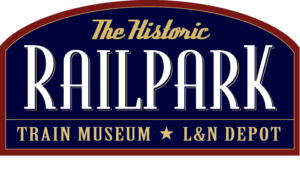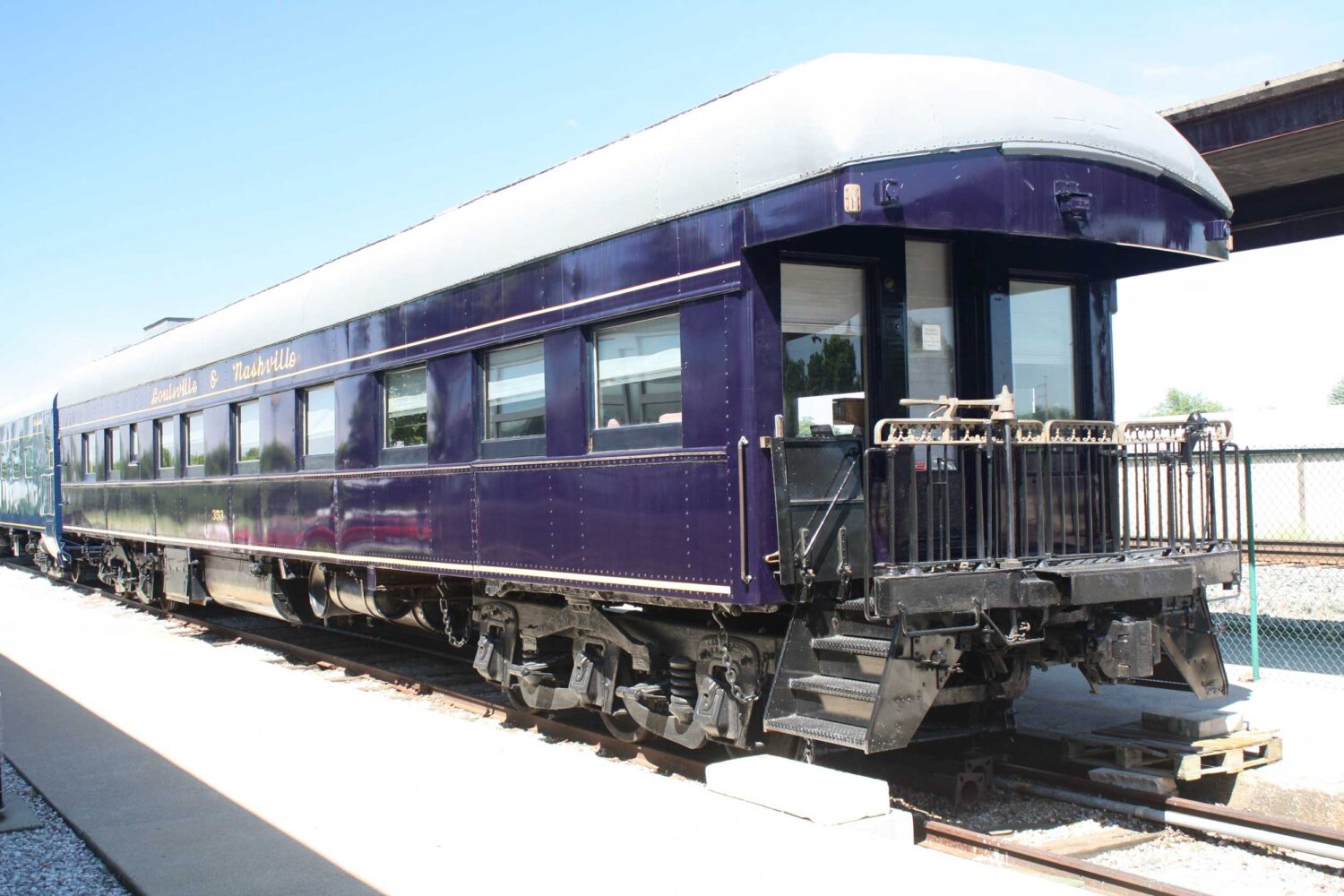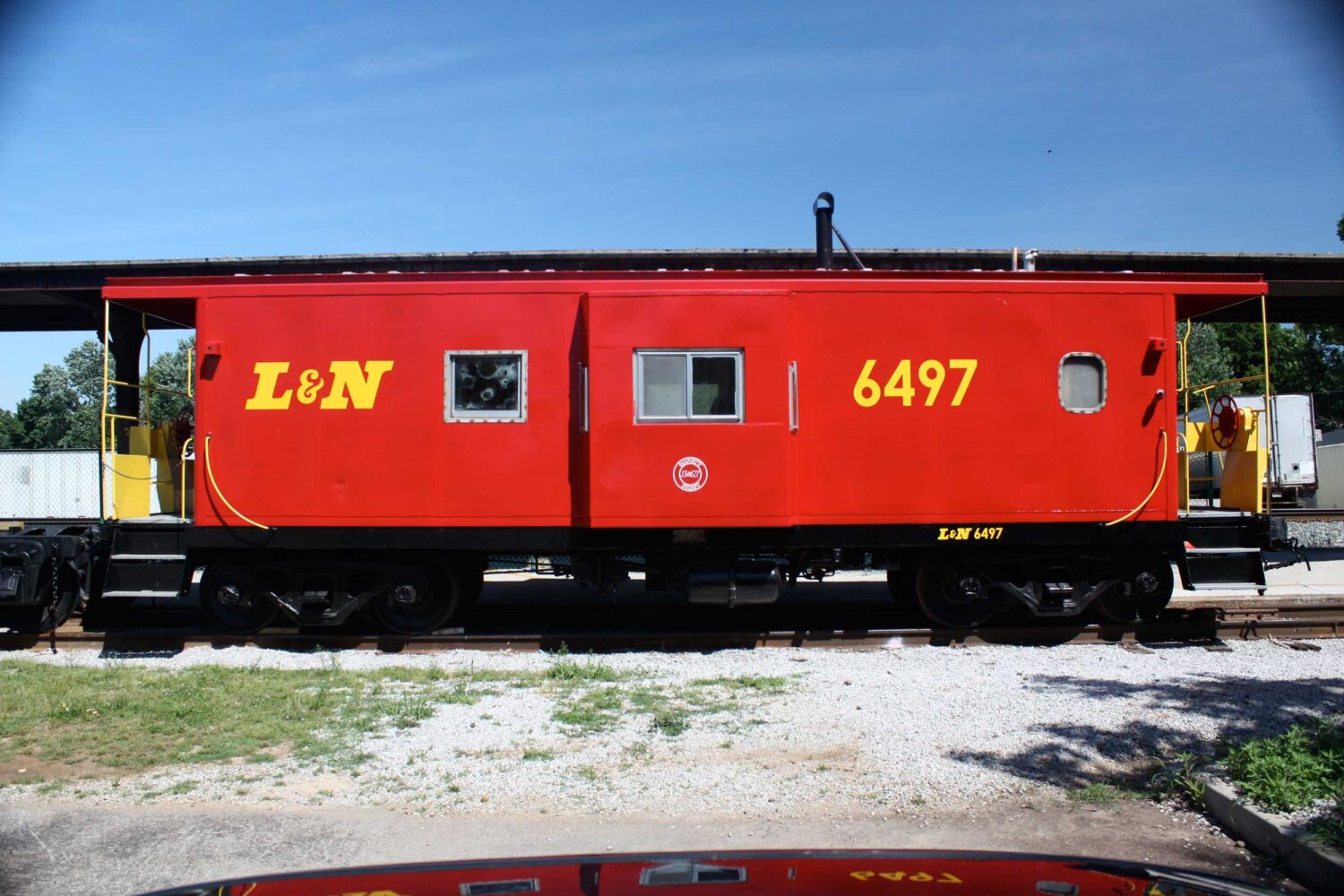After exploring the Museum, climb aboard five restored railcars and hear about their colorful past: The E-8 Engine, 1921 Railroad Post Office Car, The Duncan Hines Diner, The Towering Pine Sleeper, The Presidential Office Car and The Little Red Caboose.
RailCars
All Aboard
The 796 E-8 Locomotive
In 1937 Electro Motive Division of General Motors built the first E-Unit locomotive for the B&O Railroad. Ten different models of E-Units were built over a span of 25 years from the EA through the E9. Units were produced as A units with a cab and B units, which were cab-less and used in multi-unit lash-ups. A total of 1314 E units were produced.
The 796 E-8 Locomotive
In 1937 Electro Motive Division of General Motors built the first E-Unit locomotive for the B&O Railroad. Ten different models of E-Units were built over a span of 25 years from the EA through the E9. Units were produced as A units with a cab and B units, which were cab-less and used in multi-unit lash-ups. A total of 1314 E units were produced.
L&N RPO #1107
Railway mail service began in 1832 on Railway Post Office cars or “RPOs,” but grew slowly until the Civil War. In 1862, mail was sorted en route in order to speed mail delivery, as a train moved between two points. The idea proved to be exceptionally successful, and as the postal service decentralized its operations, it concentrated on sorting much of the growing volume of mail while it was being carried on the nation’s rail lines. Many lines earned substantial revenues with the railway post office cars which offset the profit loss from the large costs of passenger service on the same train. In 1948, 794 RPO lines ran on more than 161,000 miles of track but later declined until the last RPO stopped its delivery in 1977.
L&N RPO #1107
Railway mail service began in 1832 on Railway Post Office cars or “RPOs,” but grew slowly until the Civil War. In 1862, mail was sorted en route in order to speed mail delivery, as a train moved between two points. The idea proved to be exceptionally successful, and as the postal service decentralized its operations, it concentrated on sorting much of the growing volume of mail while it was being carried on the nation’s rail lines. Many lines earned substantial revenues with the railway post office cars which offset the profit loss from the large costs of passenger service on the same train. In 1948, 794 RPO lines ran on more than 161,000 miles of track but later declined until the last RPO stopped its delivery in 1977.
The Duncan Hines Dining Car
In 1944 the Louisville and Nashville Railroad placed a rail car order with the American Car and Foundry Company for 28 aluminum, lightweight, streamline passenger cars. Metal shortages during World War II delayed completion of the cars, but they were eventually delivered to the L&N in October of 1946. The new cars were used to create America’s first post war streamlined trains, the Humming Bird and the Georgian.
The Duncan Hines Dining Car
In 1944 the Louisville and Nashville Railroad placed a rail car order with the American Car and Foundry Company for 28 aluminum, lightweight, streamline passenger cars. Metal shortages during World War II delayed completion of the cars, but they were eventually delivered to the L&N in October of 1946. The new cars were used to create America’s first post war streamlined trains, the Humming Bird and the Georgian.
The Towering Pine Sleeper Car
The Towering Pine number #3467 was the seventeenth of twenty-two new sleepers purchased by the L&N in 1953. These lightweight sleepers were purchased by the L&N to replace aging heavy weight sleepers. During the period following World War II the traveling public had began to expect more comfort and accommodations than previously expected by rail travel. This sleeper order was a continuation of equipment upgrading by the L&N and represented state of the art rail sleeping accommodations.
The Towering Pine Sleeper Car
The Towering Pine number #3467 was the seventeenth of twenty-two new sleepers purchased by the L&N in 1953. These lightweight sleepers were purchased by the L&N to replace aging heavy weight sleepers. During the period following World War II the traveling public had began to expect more comfort and accommodations than previously expected by rail travel. This sleeper order was a continuation of equipment upgrading by the L&N and represented state of the art rail sleeping accommodations.
The L&N Presidential Car
Railroad historians are in agreement that this car is the oldest surviving passenger car manufactured by the Louisville and Nashville Railroad. The car was built at the South Louisville Shops in 1911. It is made of wood and in 1942 was rebuilt by adding steel exterior sheeting and an ACF ice-activated air conditioning system.
The L&N Presidential Car
Railroad historians are in agreement that this car is the oldest surviving passenger car manufactured by the Louisville and Nashville Railroad. The car was built at the South Louisville Shops in 1911. It is made of wood and in 1942 was rebuilt by adding steel exterior sheeting and an ACF ice-activated air conditioning system.
The L&N Caboose
Our Caboose was donated by CSX Transportation and is a Chessie Class C-27. It is one of 62 cabooses built for the B & O Railroad by the Fruit Growers Express Company at their Alexandria Virginia Factory between February and May of 1978. The Fruit Growers Express was a company owned by several railroads including the B & O. They produced refrigerator cars for a number of years. During the 1970s era, the decline in shipment of goods in refrigerator cars caused the company to branch out into manufacture of other types of cars.
The L&N Caboose
Our Caboose was donated by CSX Transportation and is a Chessie Class C-27. It is one of 62 cabooses built for the B & O Railroad by the Fruit Growers Express Company at their Alexandria Virginia Factory between February and May of 1978. The Fruit Growers Express was a company owned by several railroads including the B & O. They produced refrigerator cars for a number of years. During the 1970s era, the decline in shipment of goods in refrigerator cars caused the company to branch out into manufacture of other types of cars.
Hospital Car
Help The Historic Railpark restore the Hospital Car. The Car was built by the American Car and Foundry Company of St. Charles in Missouri in 1945, and is one of one hundred Army Hospital Cars built to bring injured troops home from World War II.













